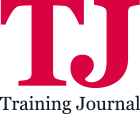💡 Innovation is essential, but without execution, great ideas go nowhere. HR and L&D play a crucial role in bridging the gap between creativity and implementation.
We can ensure all parties collaborate effectively to make a difference. ✍️ Steve Macaulay shares how to build teams that turn ideas into action
In today’s fast-paced environment, organisations must effectively turn innovation into tangible results or risk the consequences of being left behind. Cultivating a proactive and practical approach is essential, enabling teams to anticipate opportunities, tackle challenges, and adapt quickly to change.
Without the right capabilities, even the best ideas can fail to materialise
This is vital at every organisational level, not just for entrepreneurs or inventors, but it can be elusive. HR and L&D professionals play a crucial role in fostering this practical and proactive approach, one that marries ideas and clear action, especially during frequent common transitions such as launching new products, implementing technologies, or adjusting to new ways of working.
The importance of a proactive approach
A proactive outlook encourages employees to take the initiative and embrace change. Key benefits include:
- Innovation: Proactive individuals drive continuous improvement and are not afraid to experiment with new ideas.
- Adaptability: They view change as an opportunity for growth and can adapt to new market demands or processes.
- Initiative: Proactive employees identify opportunities and act on them, even in uncertainty.
- Resilience: They view setbacks as learning opportunities, allowing them to persist through challenges.
As part of a development process, HR and L&D professionals can foster these behaviours while addressing the challenges of implementing innovative ideas.
Challenges of putting new ideas into practice
While generating innovative ideas is crucial, turning them into reality often requires overcoming significant obstacles. One common challenge is idea overload, where teams generate too many ideas without clear priorities. This can lead to scattered efforts, making it difficult to focus on the most promising opportunities. Another obstacle is resistance to change, as employees may fear disruption or uncertainty associated with new initiatives. Overcoming passive resistance and gaining buy-in is critical to ensuring the success of any change.
In addition, many organisations are hindered by organisational bureaucracy, where red tape, slow approval processes, and lack of resource allocation delay or obstruct progress. This can frustrate teams and stifle innovation. Furthermore, communication breakdowns can create confusion and inefficiencies. Misaligned goals, unclear roles, and poor communication between stakeholders often result in missed opportunities or failed projects.
Another challenge is skill gaps, as teams may lack the necessary technical or leadership skills to execute their ideas effectively. Without the right capabilities, even the best ideas can fail to materialise. Lastly, overconfidence can derail projects. Proactive teams may underestimate the complexities of implementation, leading to unrealistic timelines, budgets, and resource requirements, which ultimately hinder progress.
How to overcome these? There are considerable skill and process considerations which can’t be compartmentalised into a single set of competencies. HR and L&D must help teams balance creativity with the necessary skills to implement ideas successfully. Research can help give insights into necessary actions.
Insights from research: Balancing teams for better performance
Recent research by Emich, Martin, Peterson, and colleagues highlights the importance of balancing proactive individuals in teams with those who excel in implementation, labelled ‘conscientiousness’—ensuring creativity is combined with practical execution. Proactive individuals might initiate change but can be less strong in attention to detail. Conscientious individuals excel at follow-through but may not be as innovative. Teams that combine both characteristics perform better, ensuring ideas are both generated and then executed effectively.
This research echoes Meredith Belbin’s earlier work, which found that diverse and complementary team roles and skills lead to better performance than those composed solely of bright ideas people.
Bridging the gap between change advocates and implementers
To ensure the success of initiatives, change advocates (those enthusiastic for change) and implementers (those executing it) must collaborate effectively. They are not natural bedfellows. These two groups often have different priorities and ways of thinking, which can create tension if not managed properly. L&D can promote development and coaching to emphasise good interaction and understanding, such that:
Change advocates:
- Listen to implementers’ concerns about feasibility and resource constraints
- Provide clear communication, set realistic timelines, and ensure adequate resources
- Remain open to feedback, adapting their vision and plans as necessary to ensure successful execution
Implementers:
- Engage proactively with change advocates to clarify expectations and ensure alignment
- Focus on offering constructive solutions rather than merely pointing out obstacles
- Ensure that their work is aligned with the broader goals of the initiative, contributing to the overall success of the organisation
Examples of successful collaboration
To illustrate the importance of collaboration, consider the following examples:
- Implementing a new project management system: When transitioning to a new operating platform, fostering dialogue between IT leaders and team members helps align goals, ensure efficient implementation, and address concerns. Cross-functional teams, along with training and feedback mechanisms, ensure that the system is adopted smoothly.
- Launching a new product line: A new product launch requires coordination between product development, production, and marketing teams. Regular meetings, a balanced team structure, and ongoing training can ensure that timelines are met, strategies are aligned, and the product is positioned effectively in the market.
- Adopting remote working policies: Introducing flexible work arrangements requires careful planning and input from employees. Open conversations, task forces to oversee new policy development, and training in virtual collaboration help ensure the success of remote work policies. As employee needs evolve, policies can be adjusted based on continuous feedback.
Key takeaways for HR and L&D practitioners
To successfully foster a proactive approach and drive innovation while ensuring effective implementation, HR and L&D professionals should:
- Focus on balanced team composition: Teams with a mix of proactive and conscientious individuals tend to perform better. Avoid extreme team compositions and prioritise alignment of traits to ensure optimal performance.
- Coach teams to recognise strengths and weaknesses: Help team members identify their natural strengths and work on developing areas where they may be less proficient. Encourage proactive employees to see the value of paying attention to detail and help to ensure that implementation-focused employees view new ideas as valuable.
- Adopt a range of learning methods: Develop training programmes that blend proactive mindset development with practical implementation skills. Incorporate real-world scenarios, role-playing, coaching, and e-learning tools to ensure employees can apply what they learn in real time.
- Foster ongoing collaboration: Set up arrangements to encourage open dialogue between change advocates and implementers to ensure alignment, facilitate problem-solving, and ensure initiatives remain on track.
Culture for implementation
For organisations to thrive in today’s rapidly changing environment, fostering innovation with effective implementation is crucial. HR and L&D professionals can make a valuable contribution to cultivating a culture that embraces proactivity and ensures successful execution.
By focusing on balanced team composition, with practical implementation skills, and fostering collaboration between change advocates and implementers, organisations can take full advantage of the benefits of successful change initiatives.
Steve Macaulay is an associate at Cranfield Executive Development. He can be contacted at: s.macaulay@cranfield.ac.uk




